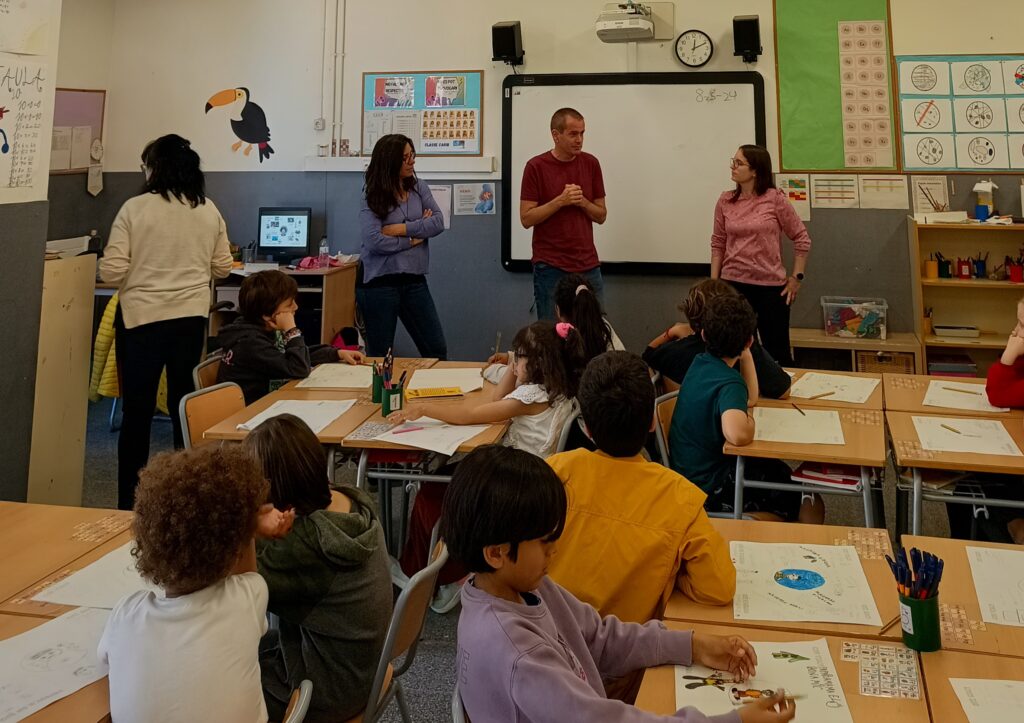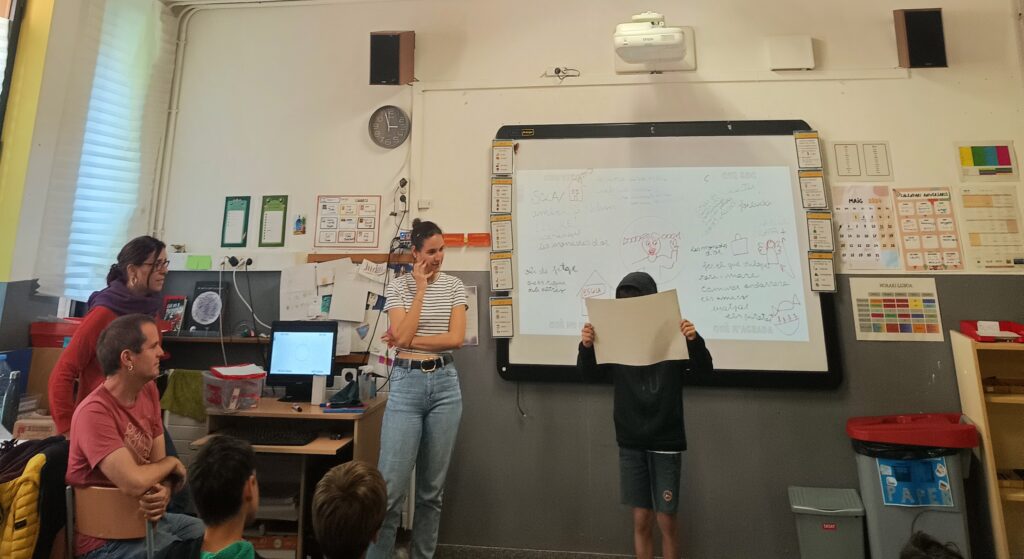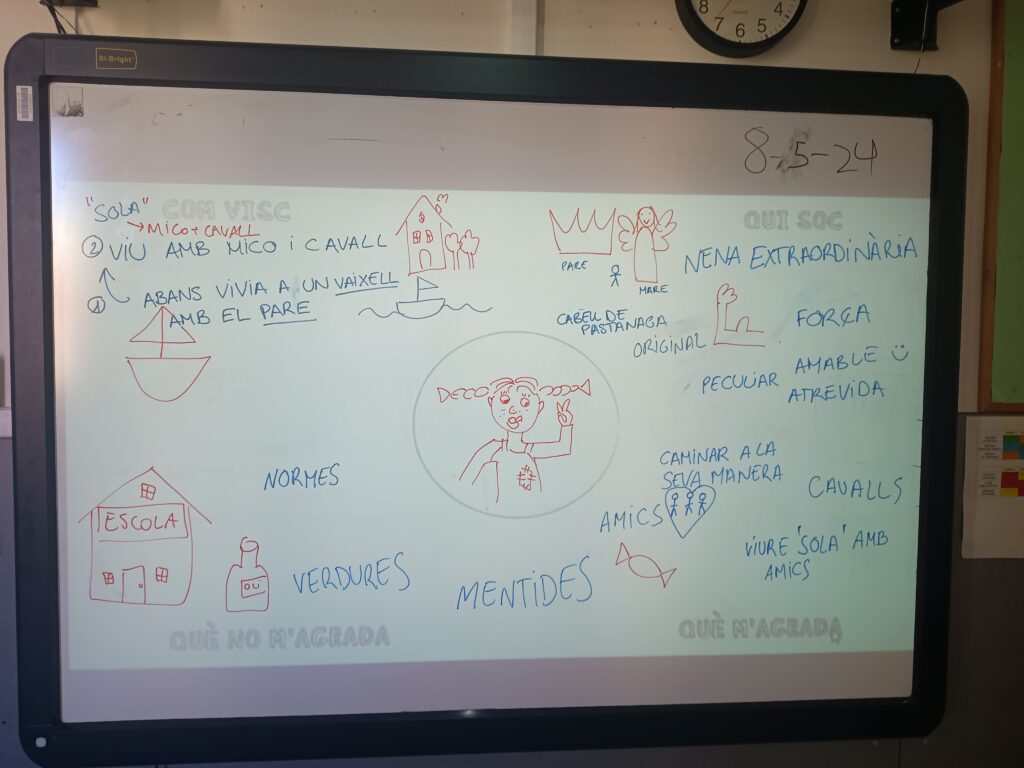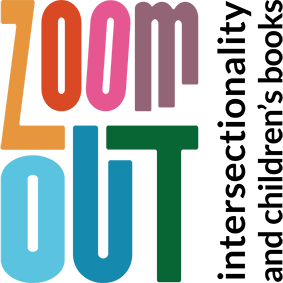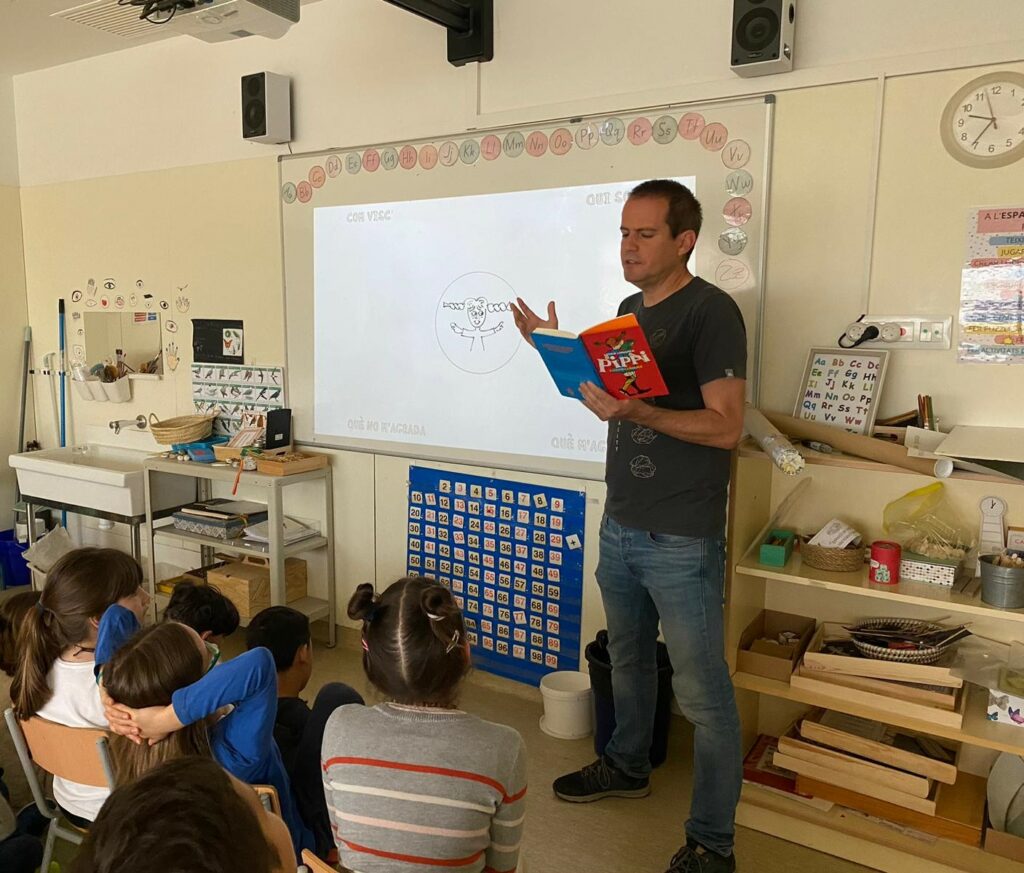
Student workshops were held at the school Joan Mirò in Barcelona and at the school La Sínia in Vic. They involved more than one hundred young students in total, from grade 1 to grade 5, and were taught by Gerard Coll Planas and the research group CIEG from Vic University. In the workshop at the school Joan Mirò in Barcelona also participated Elena Fierli from the Italian Association SCOSSE, one of Zoom Out partner.
We started to test the workshop materials elaborated and the teaching/learning experiences shared during the teacher’s workshops. Subjects that do not always find their way into the classroom, such as intersectionality, discrimination with regard to ethnicity and gender inequality, were brought up, and children’s picture books were read. After a get-to-know-you circle and introductions, the team of teachers talked about the project and discussed inequalities and discrimination
The workshops were divided into two parts.
The first activity was the elaboration of the identity map. A large circle with four arrows was drawn on a sheet of paper, and the questions:
Who am I
Who I live with
What I like
What I don’t like
Before they made their own identity map, we read an extract from the story of Pippi Longstocking in which the main character is described. On the blackboard, starting with the reading, we built together the identity map of Pippi Longstocking and then of Harry Potter. Then each student made their own map. Some chose to use written words, others drawings. At the end we returned to the circle to conclude the activity together with a moment of restitution. We did this in a circle because the circle breaks down barriers because it puts people on the same level and is horizontal. Each student presented the map to the others and told them about it.
Then, for the second activity, each class was divided into groups. Each group had small pictures representing characters from literature, or protagonists of films or cartoons related to children’s literature. After a moment of collective discussion, all the pictures were placed on a wall, creating a bigger picture that contained them all. Thus we were able to get an overview of who the protagonists of the stories are: how many Afro-descendants, how many girls, how many boys, what the roles of boys and girls are. And through the dialogue about the characters, we identified the discrimination present in children’s and adolescent literature.
The workshops were a journey of exploration into the world of children’s imagery, together with characters from cartoons, comics, picture books and cinema. Reading stories from an intersectional point of view also means discovering who the protagonists of the stories we already know are, analyzing their characteristics, understanding what their roles are. The students were happy to participate in this exploration that allowed us to see that nothing has only one point of view but that everything can be looked at from many different perspectives.
